
12 minute read
IntroductiontoMaserati Maserati Road Cars
Biturbo2500
Years of production: 1983-1991
Numbers produced: circa 6500
Engine: 90°V6 twin turbo 18v, 2.5L, 189-196 hp
While the two-litre versions of the Biturbowere reserved for the Italian market, a 2.5 litre destined for exportation version was presented in 1983. The 90°V6 three-valve engine had an increased bore to expand its capacity to 2491 cc, but thecylinder liners were now from cast iron instead of aluminium and this engine didn’t have intercoolers for the two IHI turbochargers. The Biturbo2500 maintained the Torsenlimited slip differential from the two-litre versions (a world premiere on a production car). A slightly more powerful version was named BiturboES. In 1987 the Biturbo2500 and BiturboES adopted fuel injection and the name was changed into BiturboSi 2500.
Biturbo4-door models (all versions)
Years of production: 1984-1994
Numbers produced: 9809 (all versions)
Engine: 90°V6 twin turbo 18v; 2.0L, 2.5L & 2.8L; 200-248 hp; 90°V6 twin turbo 24v, 2.0L & 2.8L, 245 & 279 hp
With an 86 mm extended wheelbase and two added rear doors, the Biturbowas transformed into a compact and sporty saloon car. It was presented first in 1984 with the 2.5L engine destined for export (425), but little later also followed by a two-litre version meant for the Italian market (420, 420S, 420i, 420Si). A minor facelift in 1988 had these models replaced by the 422, in harmony with the two-door 222. This model was joined in 1990 by the 4.18v. and the four-valve 4.24v., both fitted with a two-litre engine. The export model received in 1987 the 2.8L engine in 3-valve and in 1991 also in 4-valve version (430 and 430 4v.). Other upgrades and aesthetical modifications were in-line with the coupe models. In spite of the fact that they had four doors, these models were never named Quattroporte.

BiturboSpyder(all versions)
Years of production: 1985-1994
Numbers produced: 3076 (all versions)
Engine: 90°V6 twin turbo 18v; 2.0L, 2.5L & 2.8L; 180-224 hp; 90°V6 twin turbo 24v, 2.0L, 241 hp
Top performances and open top driving fun were again combined inthe BiturboSpyder who was the first open Maseratisince the GhibliSpyder, more than 12 years earlier. Development for the body was done by Zagatonear Milan while the bodies were assembled in Turin before transportation to Modena where the mechanical parts were added. The 2514 mm wheelbase from the Biturbowas reduced to 2400 mm for the Spydermodels. The BiturboSpyderexisted in various versions and followed the same technical and aesthetical evolutions as the coupe, with exception of the 24-valve 2.8L engine. The various versions were: BiturboSpyder, BiturboSpyder2500, BiturboSpyder i, BiturboSpyderi 2500, BiturboSpyder2.8i, Spyder2.0 4v. and Spyder2.8. In 1991 the Biturboname was dropped for the open models.
Years of production: 1987-1991
Numbers produced: 469
Engine: 90°V6 twin turbo 18v, 2.8L, 255 hp
With the 228, of wichproduction started in 1987, Maseratiwanted to offer an alternative to the big luxury coupes from Mercedes-benzand BMW. The design of the 228 recalls much to the Biturbo, but its lines were softer and the 228 was built on the longer chassis taken from the 4-door Biturbomodels. The engine capacity was increased to 2.8 litres. The 228 was a very luxurious coupe and standard equipment included powersteering, alloy wheels, central locking, electric windows and hand-stitched leather seats. ABS was available on request. This model was in 1991 followed by the 222.4v.
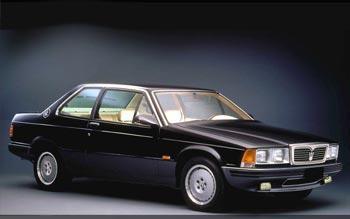

222 & 2.24v
Years of production: 1988-1992 and 1989-1992
Numbers produced: 1156 & 1147
Engine: 90°V6 twin turbo 18v, 2.0L, 223 hp; 90°V6 twin turbo 24v, 2.0L, 245 hp
With its new name 222, the Biturboreceived a small stylistic upgrade. The front grille was new and the Nacaair ducts on the bonnet disappeared, while the two-litre engine still had twin intercoolers. Injection was now electronic from Weber-Marelliwith integrated ignition. The 222 had electrically adjustable seats and electronic climatecontrol. In 1989, the twin-turbo V6 engine received a substantial technical upgrade. The cylinder heads were new with four valves per cylinder instead of three and two camshafts per cylinder bank. The light alloy cylinder liners were treated to reduce internal friction. Vehicles equipped with this more powerful version of the two-litre engine were named 2.24v.
Karif
Years of production: 1988-1991
Numbers produced: 221
Engine: 90°V6 twin turbo 18v, 2.8L, 248-224 hp
The MaseratiKarif, presented at the Geneva motorshowof 1988, was designed for pure driving fun. It had the same powerful 2.8L twin-turbo engine as used in the 228, but it was based on the shortened chassis from the BiturboSpyder. The 114 mm shorter wheelbase and the increased torsionalrigidity due to the reinforced sills from the spyder’sfloorplan had a positive effect on the Karif’shandling. The rear seats from the Biturbowere sacrified for the Karif. Instead, extra lugguagespace was available behind the front seats. This made the Karifideal for long and joyful travelling for two persons. Later versions of the Karifwere equipped wit h a catalytic converter which reduced the engine power.



Shamal
Years of production: 1990-1996
Numbers produced: 369
Engine: 90°V8 twin turbo 32v, 3.2L, 322 & 326 hp
Named after a Mesopotamian wind, the new Shamalwas the most extreme derivate from the Biturbomodel family. It was, just like the Karif, based on the shorter BiturboSpyder floorplan, but offered also two small rear seats. The body of the Shamalwas completely new, with exception of the doors. The Shamal’smuscular and aggressive design was the work of designer Marcello Gandini, which could be easily recognised by the shape of the rear wheel arches. The biggest news of the Shamalwas however found under the bonnet. The V6 was replaced by a completely new twin-turbo V8 engine with four camshafts and 32 valves. This was coupled to a new 6-speed gearbox from Getrag. The design of the shamalgave inspiration for the later Ghibli model. This is one of the most extreme production cars ever made.
Racing
Years of production: 1990-1992
Numbers produced: 230
Engine: 90°V6 twin turbo 24v, 2.0L, 283 hp
The MaseratiRacing was presented in December 1990, at Maserati’susual press meeting before Christmas. This latest version of the Biturbofamily received a restyling with a nose that was inspired by the Shamal, but he most important news came from under the bonnet. The Racing had the same 24-valve version of the two-litre engine as presented two years earlier for the 2.24v, but a number of modifications were made. The crankshaft was new, the connecting rods were lighter and the compression ratio has been increased. Together with modified turbochargers, made this from the Racing the most powerful twolitre production car in the world. Also the Getraggearbox was new and the car was fitted with intelligent active shock absorbers from Koni. With a top speed of 256 km/h and an acceleration to 1000m in only 25,9 seconds, performances of the racing were excellent.


IntroductiontoMaserati Maserati Road Cars
222 SR & 222.4v
Years of production: 1991-1993
Numbers produced: 220 & 130
Engine: 90°V6 twin turbo 18v, 2.8L, 224 hp; 90°V6 twin turbo 24v, 2.8L, 279 hp
While the 222 and 2.24v with their smaller two-litre engine were meant for the Italian market –Italian tax rules penalised strongly cars with an engine capacity of over two litres, the 222 SR and 222.4v with their 2.8L version of the twin-turbo V6 engine were destined for exportation. These cars received the same stylistic upgrade as the Racing a few months earlier. The 222SR, who replaced the BiturboSi 2500, still had the engine with 3valve cylinder heads and single over head camshafts, and was fitted with 15”wheels. The more powerful 222.4v had the 4-valve cylinder heads and received 16”wheels.
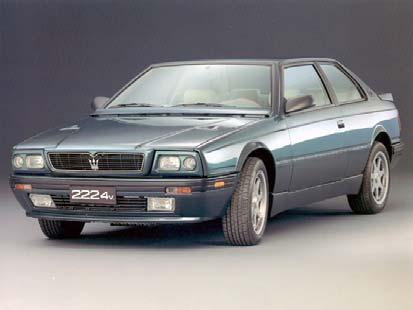
Barchetta

Years of production: 1992-1993
Numbers produced: 17
Engine: 90°V6 twin turbo 24v, 2.0L, 315 hp
The MaseratiBarchettais a bit an outsider in the list of Maseratiroad cars as it was never really intended for road use. This car was developed for a single-make championship which was hold on various race tracks across Italy and Europe during 1993. The Barchetta had a single backbone chassis made from aluminium. This was a technology that has been developed for the Chubasco-prototype. The centrally mounted Engine was the twolitre V6 in 24-valve configuration with power boosted to 315 hp, while its wheel geometry was Formula 1-style and the body was made from composite and carbon fibre. With a total weight of only 775 kg, performances were outstanding. A road-going version was considered but never commercialised due to homologation difficulties.
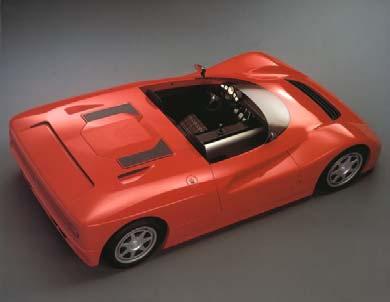
Ghibli(2nd generation)
Years of production: 1992-1998
Numbers produced: 2303 (all versions)
Engine: 90°V6 twin turbo 24v; 2.0L & 2.8L; 306, 281 & 330 hp
For the latest descendant of the Biturbofamily tree, the name of one of the greatest MaseratiGran Turismocars of the 1960’s was revived. The new Ghibliwas still based on the Biturboplatform, but had a more modern body design and wider tracks. As usual, the two-litre version was destined for the Italian market, while the 2.8L was made for exportation. In 1995, the Ghibliwas named GhibliGT and underwent a number of technical modifications, included a new rear differential. A more potent version of the 2.0L, the GhibliCup, referred to the one-make racing series which was organised with the model. This was with its 330 hp the worlds most powerful two-litre production car.
QuattroporteIV
Years of production: 1994-1998
Numbers produced: 1670 (all versions)
Engine: 90°V6 twin turbo 24v, 2.0L & 2.8L, 287 & 284 hp; 90°V8 twin turbo 32v, 3.2L, 335 hp
The fourth generation of the MaseratiQuattroportewas presented at the Turin motorshow in April 1994. It was the first car to be presented under full Fiat ownership. The sober but elegant design was from Marcello Gandini, just like the spectacular Shamalfive years earlier. With respect to the first generations of the Quattroporte, the QuattroporteIV is very compact but its performances are at true Gran Turismolevel: a top speed of 260kmh and acceleration from 0 to 100 km/h in less than 6 seconds. From 1996, the Quattroportewas also made available with the 3.2L 32-valve V8 engine from the Shamal, which improved performances even further, and fitted with 17”wheels. Standard was a 6-speed gearbox from Getragbut an automatic 4-speed transmission from ZF (V6) or BTR (V8) was also available.

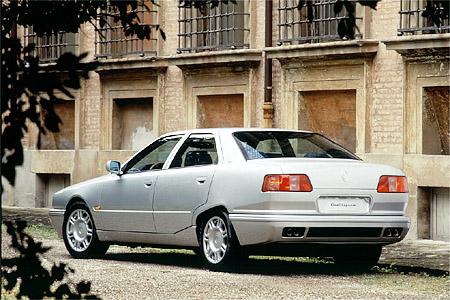
IntroductiontoMaserati Maserati Road Cars
QuattroporteEvoluzione
Years of production: 1998-2001
Numbers produced: 730 (all versions)
Engine: 90°V6 twin turbo 24v, 2.0L & 2.8L, 287 & 284 hp; 90°V8 twin turbo 32v, 3.2L, 335 hp
When in July 2007 Ferrari took over control of Maserati, one of the main objectives was to radically improve the quality of the vehicles. Notwithstanding it was widely renowned for its excellent driving qualities, the Quattroportresuffered since its introduction from reliability problems. Measurements taken were a complete revision of the production process and hundreds of the Quattroporte’scomponents were redesigned in order to improve quality. The result was presented in 1998. These revised Quattroporte’scan be recognised by the “Evoluzione”label on the front wings.
3200 Gt
Years of production: 1998-2002
Numbers produced: 4795
Engine: 90°V8 twin turbo 32v, 3.2L, 370hp
With the introduction of the completely new 3200 GT, in Paris 1998, Maseratireturned to its roots by building a true Gran Turismoin the great tradition of the brand and concluded in this way the Biturboarea. It still had a twin-turbo engine, but everything else on this vehicle was completely new. The V8 from the Shamaland QuattroporteIV underwent a number of substantial modifications and delivered now 370 hp. Choice was between a 6speed manual transmission (ZF) or a 4-speed auto gearbox (BTR). The design from Giugiarowas, just like his creations for Maseratiin the past, a true masterpiece and this model was mainly responsible for Maserati’s sales revival which started in 1998. Its boomerang-shaped taillights were the first on a production car using led-technology. In 2001, a more edgy version was presented carrying the name “AssettoCorsa”.


SpyderGT & SpyderCambiocorsa
Years of production: 2001-2007
Numbers produced: Engine: 90°V8 dry sump, 4.2L, 390 hp
With the introduction of the MaseratiSpyder, at the Frankfurt motor show of 2001, again a new area started for Maserati, this time an area of close technical collaboration with group partner Ferrari. Whilst the exterior of the new Spyderstill reminds strongly to the 3200GT model, under the skin this car is completely new. Under the hoodthe twin-turbo unit has been dropped in favour of a completely new, normally-aspirated 4.2L V8 with a dry sump lubrication system. Also the transmission is totally new. The gearbox is moved to the rear end of the car where it forms a single unit with the differential (transaxle). The Spyderhas a shortened wheelbase with respect to the Coupéand is strictly a two-seater only. The soft-top opens and closes fully automatically. This model initiated the return of the Maseratibrand to the United States.
CoupéGT & CoupéCambiocorsa
Years of production: 2002-2007
Numbers produced: Engine: 90°V8 dry sump, 4.2L, 390 hp
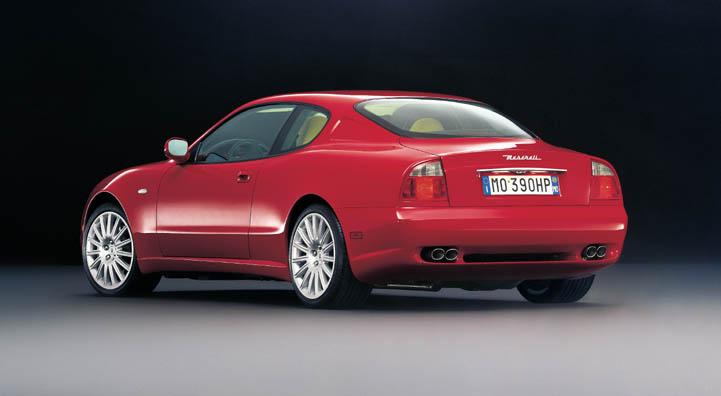
Shortly after the introduction of the new Spyder, it was time for the closed model to undergo the same technical transformation. The result was presented to the public at the Detroit motor show in January 2002. The Coupéadopted the elegant Giugiaro-designed body style from the 3200GT model it replaced, but under the skinalmost everything is new. The typical boomerang-shaped taillights from the 3200GT were dropped to meet American homologation requirements. The new Coupéhas the same all-new normally aspirated V8 engine and offers, just like the open Spydervariant, two gearbox options: a traditional manual transmission (GT) and a Formula 1-style electro-hydraulic operated gearbox with gearshift paddles at the steering wheel (Cambiocorsa), both located between the rear wheels (transaxle layout).
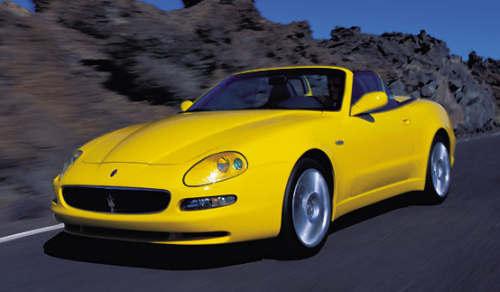
QuattroporteV
Years of production: from 2003, still in production Engine: 90°V8 dry sump, 4.2L, 400 hp


While the QuattroporteIV was a compact sports saloon, the fifth generation Quattroporte marked Maserati’sreturn to the upper premium saloon segment, in the spirit of the first generation Quattroporteof 1963. The QuattroporteV combines royal interior space and the highest levels of comfort with a true sports heart. A powerful dry-sump V8 engine, mounted well back in the chassis, and a robotized transaxle transmission stand for a perfect weight distribution and excellent dynamic qualities. After its launch at the 2003 Frankfurt motor show, the Quattroportebecame an instant commercial success for Maseratiand has won numerous awards. This is partly thanks to its astonishing Pininfarina-designed bodywork.

GranSport& GranSportSpyder
Years of production: 2004-2007
Numbers produced: Engine: 90°V8 dry sump, 4.2L, 400 hp
With the GranSport, presented at the Geneva motor show of 2004, Maseratirevives one of the great names of its own motoring heritage to indicate the most dynamic version of the M138 model range. The GranSportincorporates all necessary ingredients to convert the Coupéfrom a great performance GT car in a true driving machine. Various engine modifications brought the power up to 400 hp, while the control logic of the Cambiocorsa gearbox, standard for the GranSport, has been improved. Other modifications include new 19-inch alloy wheels, upgraded suspensions, a new front bumper withlarger grille, aerodynamic side sills and a more sporty interior with new seats. The GranSportwas joined later by an open GranSportSpyderversion, presented at the Frankfurt motor show of 2005.
MC12 Stradale
Years of production: 2004-2007
Numbers produced: ±50
Engine: 65°V12 dry sump, 6.0L, 630 hp
The MC12 (MaseratiCorse, 12-cylinder) represents Maseratiin its most extreme and performantform. The ‘Stradale’, or road-going version, was created to be able to homologate the model for international GT-racing. With the MC12 Maseratireturned to GT racing in a highly successful way and the GT1 version has provenitself as the car to beat on race tracks all over the world.
The MC12 is the fastest Maserati road car ever made; acceleration from standstill to 200 km/h takes less than 10 seconds and top speed exceeds 330 km/h. The technology of the MC12 is based on the Ferrari Enzomodel, however substantial modifications were made to engine, chassis and aerodynamics. In late 2006, Maseratipresented the MC12 VersioneCorse, an even more extreme track-day variant of this all-conquering supercar.

QuattroporteAutomatic
Years of production: from 2007, still in production
Engine: 90°V8 wet sump, 4.2L, 400 hp
The mostimportanttechnicalevolutioncamewiththe introductionof the Quattroporte Automaticat the 2007 Detroit motor show. Whilethe Quattroporte withDuoselect transmissionhasproventobeanideal match forMaserati’s sportyreputation, demandfor a fullyautomaticversionhadalwaysbeenpresent. The Quattroporte Automaticismuch more thena Quattroporte simplyfittedwitha new gearbox. Fromthe 16.500 components of whichthe Quattroporte is made, 4.800 are new. The powertrainiscompletelynew with the adaptionof a new wetsumpengine(F136UC), 6-speed automaticgearboxfromZF, propellorshaftand limitedslip differential. The Quattroporte Automaticisavailablein standard versionaswellasSport GT and Executive GT.
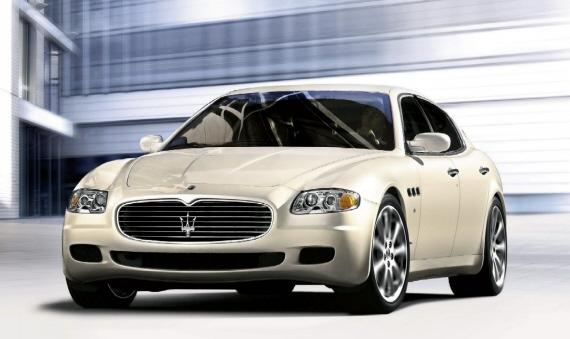
IntroductiontoMaserati Maserati Road Cars
GranTurismo
Years of production: from 2007, still in production
Engine: 90°V8 wet sump, 4.2L, 405 hp

With the new GranTurismo, presented at the 2007 Geneva motor show, Maseratiapplies the experience gained in the luxury car segment with the Quattroporteto create a true luxury GT car. The Granturismois based on a modified Quattroporte floorplan. With an overall length of 488cm, the Granturismois significantly bigger than the Coupé/Gransport models it replaces, and offers comfortable interior space to four adults. While the mechanical layout of the GranTurismois identical to the QuattroporteAutomatic –it uses the same 4.2L V8 wet sump engine and automatic 6-speed gearbox from ZF –various settings are specific to give the GranTurismoa more dynamic ride. Its pure and elegant body design is from the hand of Pininfarinaand reflects perfectly Maserati’sgreat tradition in the creation of elegant and sporty grand touring cars.
GranTurismoS
Years of production: from 2008, in production from May 2008
Engine: 90°V8 wet sump, 4.7L, 440 hp
Exactly one year after the presentation of the original GranTurismo, Maseratiunveiled a first derivate of this highly renowned GT car. The GranTurismoS was created to meet the demand of those who prefer a more dynamic version of the existing GranTurismo. Its more powerful 4.7L V8 engine and completely new, rear mounted robotized gearbox with super fast MC-shift strategy, in combination with an upgraded braking system and modified suspensions turn the GranTurismoS in a true performance car.
The more sporty nature of the GranTurismoS is perfectly reflected in its appearance with newly designed alloy wheels, dark headlights, new aerodynamic side sills, a boot lid spoiler, liberated exhaust system and modified interior trim. The character of the GranTurismoS is unmistakably aggressive, yet it keeps loyal to its GT background by offering the highest standards of comfort for all four occupantsduring long travelling.










